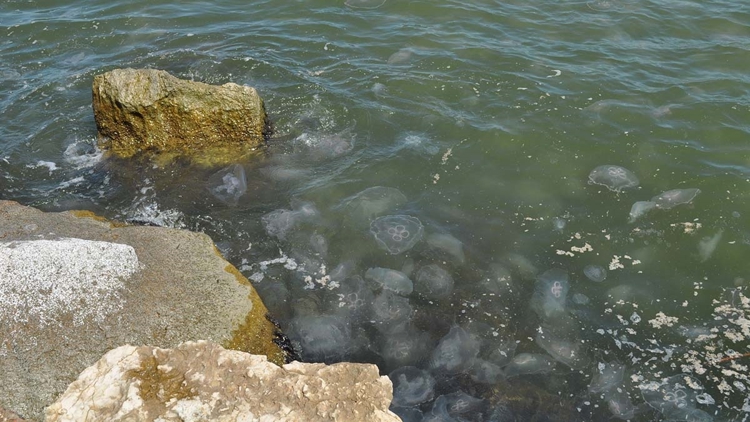
Have you noticed the abundance of jellyfish along the Texas Coast recently? Thousands of moon jellies have washed ashore, creating a surreal sight for beachgoers. The bumper crop of jellyfish is believed to be a result of the storm surge from Hurricane Francis.
Captain Sharkey Marquez from Out Cast Charters in Galveston described the scene as “Jellyfish as far as the eye can see! That is absolute insanity!” These fascinating creatures have mesmerized both locals and visitors alike.
Despite their prevalence in the waters, moon jellies remain a mysterious and intriguing species. They are known for their translucent appearance and unique characteristics. Moon jellies are commonly found in aquariums and zoos, including the Houston Zoo.
Jace Tunnells from the Harte Research Institute of Gulf Coast studies shared interesting insights about moon jellies, including the fact that they lack a brain, heart, or blood. He even tested their stings firsthand and rated them as relatively mild on a scale of 1 to 10.
More fun facts about moon jellyfish
- When food is scarce, moon jellies can shrink to conserve energy.
- They primarily feed on tiny shrimp and crustaceans.
- Sea turtles are their main predators in the ocean.
- The bell of a moon jelly can grow up to 12 inches wide, resembling a dinner plate.
- According to the Houston Zoo, moon jellies are composed of 95% water.

